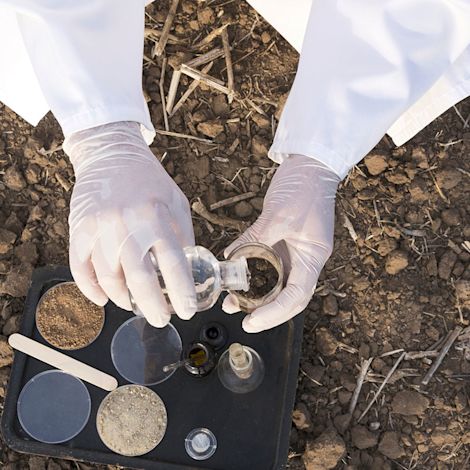Research

New PhD in 2025 Thomas van Schaik:
"Growing up near Rotterdam, I often visited the local zoo with my family. Combined with more hours spent watching nature documentaries than I would care to admit, this sparked a lasting fascination with wildlife that led me to pursue an undergraduate degree in biology and later a graduate degree in environmental biology at Utrecht University. In my research, I focus on applying novel techniques to address ecological questions, particularly in the realms of community ecology, ecoacoustics, and landscape connectivity. With prior experience using passive acoustic monitoring and camera trapping in Italy, Mexico, French Guiana, and Sweden, I now aim to apply these approaches to better understand how wildlife communities in Borneo are affected by forest fragmentation, and how conservation resources can be most effectively allocated to preserve them"
Activities in 2023-2026
The research into connectivity in palm oil dominated landscapes developed further. With a part of the money that the UU has available (acquired by various donations)two PhD students in Indonesia will be financed, Fenky Wirada and Indah Sari. On behalf of the UU prof. Julia Jones, Marijke van Kuijk and Joeri Zwerts are involved. Contacts have been made with the Indonesian university UGM and WWF Indonesia. Preparations for a MoU have been made.
The two Indonesian PhD students started the research on connectivity in palm oil landscapes. They were in the Netherlands in late 2024 (until early 2025) to start the research.
In December we had a researcher come over from England: Matt Struebig. Matt has been working on related topics in Indonesia for a long time. There were good discussions between Matt, the PhD candidates, Julia Gordon Jones and the UU staff. Matt Struebig also gave a lecture to 100 students. The professor of the new research group that UU will establish was also present
PhD Fenky Wirada

Fenky grew up as the local Dayak in Borneo where the tropical rain forest formed the culture. He has an undergraduate degree in forest conservation and MSc in environmental management. Fenky leads a team on the Forest Landscape Connectivity Program in Central Kalimantan for WWF Indonesia. As the program coordinator, Fenky designs and implements conservation programs that promote the strategies to implement wildlife corridors between fragmented forests in the landscape. Fenky has been working with WWF Indonesia in Central Kalimantan since 2015 and has had the opportunity to work with multiple actors to achieve conservation targets and tackle threats. During this time, he realized that research capacity development with Utrecht University and UGM in this PhD program about Forest Landscape Connectivity is key to tackling fragmented forest issues in the landscape. He believes that local knowledge, organizational skills, and scientific capacities are the best approaches to enable conservation in high-valuable forest landscapes.
PhD Indah Sari

Indah was born and raised in a rural area of West Kalimantan, Indonesian Borneo. She holds an undergraduate degree in forestry and a master's degree in conservation and biodiversity. Indah has been actively involved in wildlife conservation, particularly in biodiversity research and community-based conservation through environmental education. Currently, she works as a Bioacoustics coordinator in partnership with local universities in Central Kalimantan, where she conducts research and leads bioacoustics training for students and community. Her biggest goal is to be able to keep contributing to make wildlife and humans live side by side in peace, through research, community awareness and education.
Activities in 2020-2021
Currently the Prince Bernhard Chair is actively involved in several projects, including (1) a research project on dispersal networks within the PhD project RESEED, (2) a paper on perceptions of non-governmental stakeholders on forest and landscape restoration, and (3) a booklet in which experiences of practitioners working on forest restoration in the field are bundled.
(1) Simulating dispersal networks
To upscale the findings from our field surveys performed in the RESEED project, we plan to model bird and plant occurrences and simulate dispersal networks for forest fragments across the state of Sao Paulo. This research is done in close collaboration with Natalia Ocampo-Peñuela and John Garcia, former postdocs at the Ecosystem Management group in ETH Zurich chaired by prof. Jaboury Ghazoul, and assistant professor Mathias Pires and his PhD student André Martinez from UNICAMP, Brazil. Based on our findings we aim to develop restoration guidelines to promote plant-frugivore interactions that enhance biodiversity and ecosystem restoration.
(2) Perceptions from non-governmental actors on Forest and Landscape Restoration, by Daniella Schweizer, a postdoc jointly funded by the Prince Bernhard Chair and ETH Zurich.
Forest and Landscape Restoration (FLR) has been defined as a planned process that aims to regain ecological functionality and enhance human well-being in degraded landscapes. Several governments and organizations worldwide rose to the challenge of halting degradation and restoring landscapes. Non-governmental organizations, acting globally, regionally and (or) at national and local scales, play a fundamental role in supporting governments and organizations fulfill their commitments related to FLR. The perceptions of actors within non-governmental organizations engaged in FLR across countries in Asia, Africa and Latin America were gathered, focusing on what FLR is and the perceived challenges and strategies for implementation.
Our results are published in the Journal of Environmental Management:
"Perceptions from non-governmental actors on forest and landscape restoration, challenges and strategies for successful implementation across Asia, Africa and Latin America -ScienceDirect".
https://www.sciencedirect.com/science/article/pii/S0301479721003133
(3) Booklet: experiences from forest restoration practitioners
We are currently working on a booklet, which illustrates the focus theme of the term of Jaboury Ghazoul as holder of the Prince Bernhard Chair (2015-2020). In this report, we ask practitioners working on ecosystem restoration across the world, to contribute their perspectives on the greatest opportunities as well as most fundamental challenges that need to be addressed in the coming years. We ask contributors to draw on their experiences of implementing forest and landscape restoration actions, to better inform future agendas in the context of the UN Decade on Ecosystem Restoration. Collectively, contributions encompass several generic issues, including investments, governance, cultures, capacities, and legislation. Our concluding chapter seeks to establish these perspectives within a systems framework through which strategic interventions might be developed.
The booklet is expected to be published in April 2021.
Activities in 2019
-
In 2019 a new 4-year research project called ‘RESEED’ started. Congratulations to Merel Soons (UU), Marijke van Kuijk (UU), Robert Timmers (UU), Marina Côrtes (UNESP), Marco Pizo (UNESP), Mathias Pires (UNICAMP) and Jaboury Ghazoul (UU & ETH Zurich) for the award of a NWO-FAPESP funded project on “The contribution of plant-animal interactions to biodiversity and ecosystem restoration of the Atlantic forest”.
In the tropics, seed dispersing animals likely play an important role in the regeneration of secondary forests, as plants are immobile organisms that depend on dispersal of their seeds to colonize new sites. By combining field surveys and theoretical approaches we try to unravel the role animals play in forest restoration and which landscape factors enhance restoration success. This study takes place in the Atlantic Forest in Brazil, a unique region that, despite large-scale deforestation, is still considered a major biodiversity hotspot. Focal observations and wildlife cameras are used to quantify seed dispersal by fruit-eating animals (frugivores) in forest fragments of varying ages and levels of isolation. See https://www.uu.nl/en/research/academy-of-ecosystem-services/research/understanding-ecosystem-dynamics/plant-animal-interactions-in-forest-fragments
This project is one of four projects within the programme ‘Ecosystem restoration: the Brazilian Atlantic Forest as a case study’. See https://www.nwo.nl/en/news/four-projects-funded-within-nwo-fapesp-joint-call-ecosystem-restoration-brazilian-atlantic. -
Daniella Schweizer, a postdoc jointly funded by the Prince Bernhard Chair and ETH Zurich, published her work on stakeholder perceptions of forest and landscape restoration in Brazil. In the study, actors at national, state and local scales were interviewed to gather their narratives regarding barriers
and strategies for upscaling forest restoration. Similar narratives across all actors and scales indicate that a focus on improving the economics of restoration can aid in upscaling forest restoration in Brazilian Atlantic Forest landscapes. However, discrepant narratives also show that inclusive governance spaces where the negotiation of FLR interventions can take place is key to increase trust and aid implementation.
Schweizer, D., van Kuijk M., Meli, P., Bernardini, L.E., and Ghazoul, J. (2019) Narratives across scales on barriers and strategies for upscaling forest restoration. Forests, 10, 530, https://doi.org/10.3390/f10070530.
and activities:
